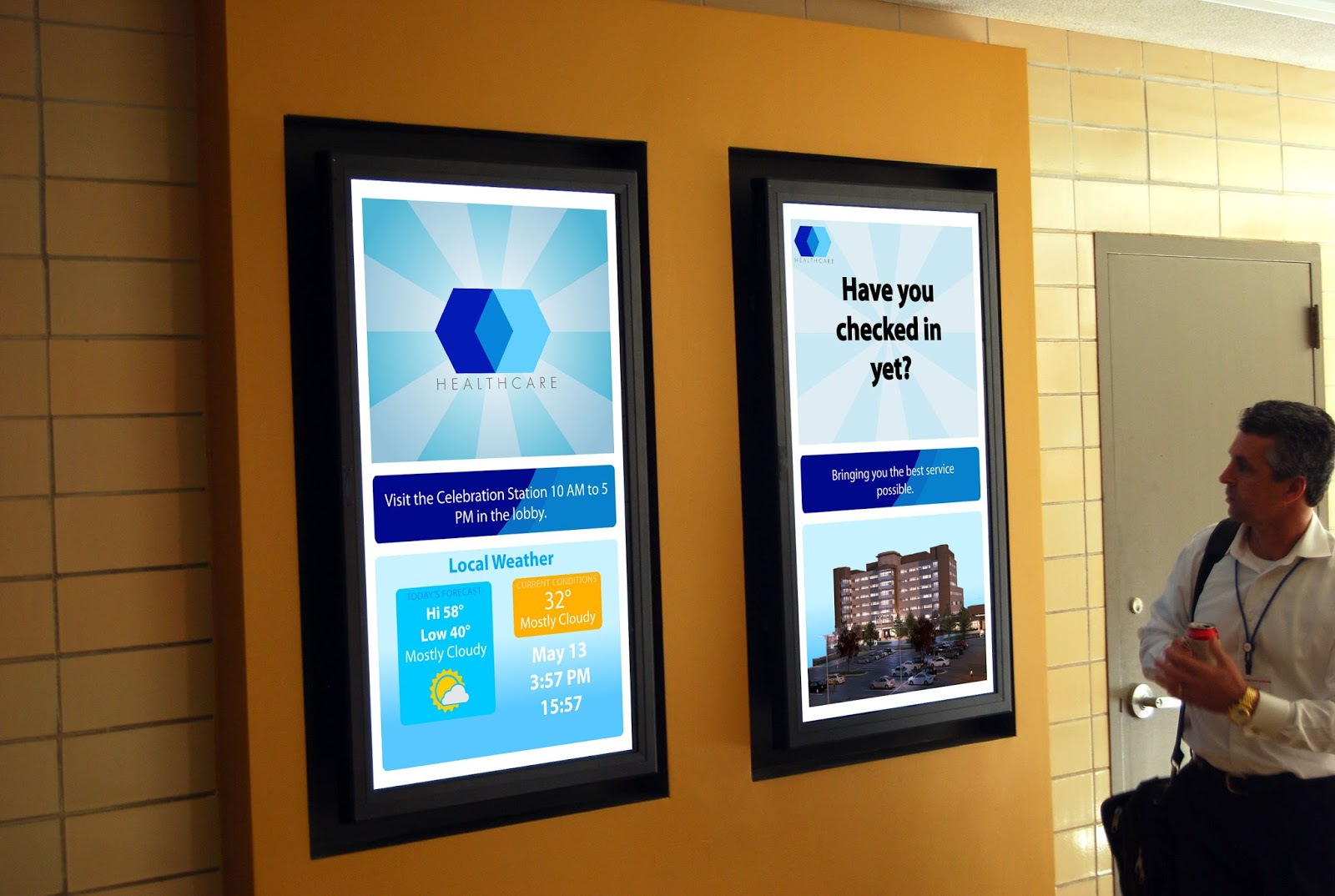Search result

These days, it isn't rare to take our mobile devices with us everywhere. Mobile phones and tablets have expanded their abilities at incredible rates. Now, the power under our fingertips is vaster than the technology that sent the Apollo missions to the moon. That is an incredible leap forward that, along with the Internet's global community has completely changed the way that humans interact and live.
The digital age has made people available 24/7, no matter where they are. People can communicate using cutting edge chat-apps that even 15 years ago would have required a powerful desktop PC (remember AOL?). Now, we can chat to someone in Indonesia from Seattle at the drop of the hat - and then be chatting to someone in Ukraine moments later - all while waiting for a train (thanks to 3G or public WiFi).
Digital Drawbacks & Technological Threats
Sadly, along with the ability and will to be connected, also comes some very serious drawbacks. Modern problems. Digital threats that in some ways make people more vulnerable than ever before in history. Being connected leaves a trail and these digital footprints code for who we are like digital DNA. The data we create is highly personal and for that reason that data is incredibly valuable and people must seek to protect it.
What we actually find is a decrease in the level of scrutiny we apply to our online presence. Facebook, Twitter, Instagram, Pinterest and the plethora of other social media platforms are all there for us to use, but that comes at a cost. We share our intimate moments. We share where we are, when we're away from home, when we're going on holiday, and often leave very easy breadcrumbs on exactly what we're doing, and when we're out, and where to find us. We share details that we wouldn't share with friends or family face to face, but saving them in a public forum is acceptable for millions of us. These posts, and images stay there forever. We think so little of our own private information that we give away lots of our information for free, without even thinking about it.
The inter-connectivity of devices also throws up additional concerns. We login to everything, on everything. Our phones have Facebook, our Facebook is used as a logon tool for many other services. We input our date of birth to gain access, our e-mails, our interests, likes, hobbies, names, friends, and more at an increasing rate. Our entire lives are online somewhere. Where people feel more at home with their mobile devices, we also login to our banks, and provide our financial information. The level of trust that we put into our devices, and the amount of digital data that we're inputting to those devices is increasing, drastically.
Governments, Internet Service Providers, advertisers, corporations, organizations, hackers, and cybercriminals, all want a piece of that pie. The technology has crept up on us quickly and only more recently have people come to accept that data should be considered a form of currency.
Whether it be to protect data from cybercriminals - or the government - the only way to be truly secure is for people to take control of their own digital footprints. Due to the value of personal data, everyone should make efforts to protect it. The sad truth is, that because that data is so valuable everyone is trying to get at it, but fewer are trying to protect it.
Personal cybersecurity
The first thing that people must realize is that mobile devices are just as vulnerable, if not more so, than PCs. In addition, the gap between Apple and Android has closed and now it is common to find malware for both. In fact, in some ways the Open Source nature of Android (as opposed to Apple's proprietary closed source environment) is allowing for encryption apps to pop up at a faster rate: things change.
These days, malware, viruses, spyware, and trojans all offer hackers methods for intercepting data - and their availability online to ‘script kiddies' means that cybercrime is at epidemic levels. The result is an elevated risk of fraud, loss of earnings - and perhaps worst of all - identity theft. For these reason, people need to take personal cybersecurity seriously and must seek to protect themselves and their devices. The most basic step is to make sure that the apps we install on our devices are secure, and that we always update them with the latest security patches and updates.
Third party and untrusted apps might be tempting, but the reality is that they could be malevolent. For this reason, people should to stick to trusted apps from known vendors and app stores. Even on official distributors such as Google Play Store it is possible to come across malicious apps.
For this reason people should take extreme care when downloading apps. Before you agree to install the app, check the permissions carefully. If the app wants access to things it doesn't really need then think twice before installing it. Why does a torch app want access to your GPS location and all of your contacts? If the requests don't seem reasonable simply don't download the app.
Remember that data is a currency, so if an app says it is ‘free' maybe you are actually paying with your data? In some cases, it might be worth paying a pound for a torch app that only requires access to the light on your phone, than to accept the free one that wants access to your entire device.
The Big Public WiFi Threat
Alongside smart devices, which allow us to be connected non-stop, in recent years there has been an explosion in the availability of public internet hotspots. Those hotspots provide high speed connectivity when people are out and about. The advantage of logging onto public connections is that people get to save their mobile data (if they have data limits).
What many people might not realize, however, is that public WiFi can be a security risk. When connected to public networks people's devices are vulnerable to having their data intercepted by another user that is logged onto the same router. This problem is the same on any WiFi - including shared home networks - so if you live in a big house where a lot of people regularly take the password from the router - you could also be at risk. The best solution for the problem is a VPN service.
A VPN service encrypts all the data between a phone, or tablet, and the VPN's servers. The result is that nobody on a public WiFi (or even on a fake hotspot controlled by a cybercriminal) can ‘sniff' the subscriber's data, as that data is encrypted.
The best VPNs provide strong military grade OpenVPN encryption, but many don't. With different levels of protection, and different services providing different benefits (and disadvantages), what you're specifically looking for can change the VPN service that you are looking for. Do you want faster speed, but are willing to accept a smaller number of geo locations, or do you need security at all costs, including speed and price? As such, it's important to do research about which VPN to use.
Other Levels of Protection
McAfee, Norton, AVG. At the launch of the internet, it's rare that individuals would have been desperate for anti-virus. There simply weren't as much malicious code flying around, but now, with an always-on internet antivirus is no longer seen as that "additional level of security that might sometimes help", or for those who delve more often into virus rife areas of the net. Now, things are different. It's rare for new computers, and new operating systems to not include some form of anti-virus, even for a month's trial while you set your computer up ensuring that you're not infected at this vital stage of life of your computer.
Not only is antivirus an integral part of your computer system, but firewalls are also included in the same package to help keep your computer safe. The problem arises that we're using our PCs, and our Laptops less and less, and using our mobile phones, and tablets more and more. There's a huge disconnect between the level of security on our larger devices, and our mobile phones, but we're still storing our intimate data on unprotected devices.
This could be a bit more understandable if protective services weren't easily available for mobile devices. Antivirus, firewalls, and password protection are just as available for devices, and the larger firms often provide multi-device deals, permitting several devices to be covered by the same services.
As well as more digital based protection, there's a large amount of physical ways to protect the data on our phones as well. Phone manufacturers are constantly in an evolutionary arms race with chancers who find new back-door entrances into devices. This has led to an increase in the amount of protection required to unlock a phone. Rather than just a pin, we now have patterns, passwords, swipe to unlock, fingerprint scans, google sign-ins. These simple methods help to keep that data secure from prying hands.
Our data, and our lives are much more mobile than they were before. Keeping up with that level of change is not only important: it's imperative.

Samsung has made another major decision recently, according to a report by The Investor. In a business which is seeing even the biggest names in the entry level shooting equipment business waver due to a lack of demand, Samsung has decided to call it quits. The last digital camera manufactured and released by Samsung was the NX500 and that was back in the year 2015! Therefore, this decision doesn't really come as a surprise, but more as a confirmation to what we already expected.

If you are thinking that this is a direct result of smartphone cameras being more popular than entry level digital cameras, you are thinking right. The quality of smartphone cameras have improved dramatically over the years, particularly in case of flagship handsets from Samsung, Apple and LG. That doesn't necessarily mean that Samsung will not be producing ANY standalone cameras though. The Gear 360 line-up is in full flow and it is expected that Samsung will continue to explore the imaging capabilities of a 360-degree camera with the Gear 360 cameras well into the future.
Saikat Kar (tech-enthusiast)

The Future is Here, a 10 Terabytes hard drive is now possible to manufacture. HGST, a Western Digital subsidiary company, has introduced the world's first 10TB hard drive at a tradeshow for Linux and open source storage developers. The Bad News, this 10TB SMR HelioSeal HDD by HGST is destined for enterprises use only.
But in a few years, one of its successors may just end up inside your next desktop PC, if by that time consumers will still buy hard disk drives or PCs.

The disk is sealed and filled with helium gas (which is where the "HelioSeal" brand gets its name from), something that helps reduce read/write head friction and enables HGST to put more platters into a single drive one that, from the outside at least, resembles an everyday desktop HDD.

When we talk about "digital revolutions", we often think about its impact on millennials and those from generation Y. However, the digital revolution also has an impact on the older generations, particularly those of pension age. Whereas traditionally technology has bypassed pensions and focused on other parts of the financial services industry, it has now reached the forefront of thought, and is beginning to change the way that some pensioners manage their money and their pension. Here, we'll look at why digital is the next step for pensions.
Trapped in a World of Paper
It couldn't be simpler than ever for people to check their current account's balance these days. You can do it online in a matter of seconds, or even on a mobile app. For most customers nowadays, you don't even need a password, and can just use your fingerprint to sign-in. Once you're in, you can transfer cash, make payments, check a balance or even upgrade your account.
However, pensions accounts are still trapped in a world of print and cumbersome treks to the branches. So, what can we do to change it? Well, the FCA has been urged to do a lot to bring pensions into the smartphone age.
Investment in Technology
However, insurers are beginning to pour money into pensions, bringing them into the 21st century. It is hoped that the move will help to engage those of the younger generations who are yet to take up pensions options.
In short, pensions companies must get with the times and drag their offering from the stone age and into the digital age, adding apps, PINs, fingerprint recognition and other forms of technology for mobile customers.
What Does the Future Look Like?
The government hopes to create a "digital dashboard" which will allow a saver to access all of their pensions in one place, allowing them the same form of online access they expect from other forms of financial services.
In recent years, interactive tools such as retirement income modellers and calculators have been made available to pension customers. While companies such as Bestinvest also introducing online platforms so that customers can apply for a SIPP online or read eBooks. However, some companies are looking further into this, particularly at how they can further engage younger potential customers, such as gamification.
To conclude, the digital revolution has often bypassed pensions. However, now, the government and leading companies are ready to invest so that pensions can keep pace with current accounts and online banking.

https://unsplash.com/photos/EG49vTtKdvI
A digital nomad is someone who works remotely, usually in a different country, through the power of the Internet. This kind of lifestyle has become popular among this generation's professionals, as it affords them a lot of flexibility and free time to pursue other things outside of work.
The key to being a successful digital nomad is preparation. For it to become an enjoyable, thriving lifestyle, a digital nomad must have these gadgets in their toolkit.
A universal travel surge protector
It's important that you protect your precious technology from random power surges and electrical mishaps. A great way to do that is by investing in a reliable travel surge protector. Get a unit that can be used in various regions, or at the very least, the countries that you want to visit.
A travel smartphone and SIM card set
Find out which mobile carriers are available at your destination, and if your smartphone can be used for their prepaid services. If your phone won't cut it for some reason, you'll have to get a secondary handset for use while traveling.
WiFi and mobile signal boosters
Wireless and mobile strength can be extremely spotty at times, especially in rural and far-flung areas. Be prepared to handle these situations with a wireless travel router and a portable signal booster kit. Stable power and a reliable Internet connection are two of the most important resources that a digital nomad needs for their lifestyle. Take a look at the weBoost Signal Booster series for dependable kits.
A tablet or e-reader
A tablet is generally more expensive, but it can do a lot more than a simple e-reader. If you're content with reading e-books and comics, then the latter should be enough for your needs.
Encrypted portable drives
There will be times that you'll need to plug in your portable drive to a public terminal to transfer files or maybe get documents printed. Naturally, you don't want your stored data to get stolen. For these instances, you can either use a different throwaway flash drive or settle for a slightly more expensive encrypted drive that you can use for a long time.
A lightweight gaming laptop
If you're into gaming, then it's best to get a laptop that can handle it. Anything your standard office laptop can do, a gaming laptop can do faster and better. Fortunately, nowadays, gaming laptops aren't that heavy anymore, so you don't have to worry about lugging a hefty backpack.
A solar backpack
You might as well grab a backpack that can charge your gadgets with the power of the sun. Settle for a sturdy pack that has waterproofing as well as useful anti-theft features like locking mechanisms and a rugged, slashproof body.
Extra power banks
You can't go wrong with packing a few of these juice packs, especially when you're bringing a boatload of gadgets.
A portable Bluetooth speaker
For the moments when you want to share yourwec sophisticated musical tastes with the whole world. Good tunes need to be shared with other people after all.
Noise-canceling headphones
For the times when you just want to blur out the noisy madness of daily life. This can be an invaluable, sanity-saving tool that can make or break your experience as a digital nomad in an unfamiliar land.

Digital signage is the recent technological development that people are using and exploring. However, these are gaining much popularity from many years all around the globe. The main reason for the popularity of the signage displays is that they work appropriately in the business environment. No matter what the type of business you choose or have the displays are the ways of advertising the products that they supply. Well among these years the signage has gained a lot of the traction which is still going on. On the other hand, there are many industries that are employing and adopting this way of communication and advertising the products.
It considered as the best choice of advertising that is used in the businesses which are proved by the users of the digital signage displays. Moreover, they also offer the benefits of advertising of the products that the company provides. It also offers various great advantages that help in enhancing the profit level of the company and the businesses. Easily connecting with the customers, visitors and traders are some of the advantages that are offered by the displays. However, many studies have claimed that they generate the view of the company then the static display formats that are shown.
The displays are helpful in delivering all the information and the innovative features related to the product or the company. However, the users can easily know all the emergency information that has been delivered by the company related to the product structure. The product description is also delivered by the signage displays that are given on a real-time basis, and also the timetables that are available. In addition to all the advantages, it has also increased the completion among all the business sectors that are dealing in the market.
Furthermore, there are times when the customers are not responding to the printed advertisements that are available. The signage displays have become the biggest helping hand in promoting the product of the companies. Through this upgraded platform to increase the company's sales by promotion. Reading this article further you will get to know all the meaning and the information about the digital signage.
Meaning of the digital signages display

It is the digital installation of the product descriptions in various types of multimedia content. However, these are basically used for the purpose of advertising business products and giving certain information to reliable and attached customers. The displays are considered as the sub-segments of the signage that the businessmen make use for the promotion of their products. On the other hand, these are used to display the content on the digital and technologically managed screens. They are widely used for relying on information like news, live weather, etc.
Moreover, the digital displays are known as the popular types of electronic displays of the information. This is the best used to give all the product descriptions to the general public about the private business environment. However, many of the digital signages are used in public places, transportation facilities, retail shops, and many other places. The main reason for placing the displays is that the general public can get aware of the products that are arising in the market. In addition to this, they can also get information about the business world.
Since the digital displays are used by many industries for advertising their products, these act as the benefit for the producers that are producing the goods. They are also used by the retailers to promote their special product offers that they set up for the customers. Apart from public places, this display signage is used in universities for providing information about the college. This is much beneficial in sharing all the communication information to the visitors and the guests that are there in the universities.
Why digital signage displays so popular?

The main reason for the popularity of digital displays is that they are having an easy to watch format than any other formats. However, the moving objects and the visual images strike the mind of the people fast than using any other wording for the promotion of the product. They are even updated by information in the faster way of the products that are available in the market. On the other hand, all the signage screens move frequently and change their messages as per the decided formats. It even benefits the viewers so that they remain updated about the information that is given.
Moreover, people can easily share all the information in the global market because of these screen displays. Among the best reason that is considered is that they can easily promote the format of advertising. Some of the benefits are mentioned below-
- It saves money- though the cost of implementing the technique is more than the printed way of advertisement, there is a surety of generating the return of investment easily in the business. Thus, this is the best benefit that digital advertisement would normally produce. There are many costs involved in printed advertisements that require a huge investment. But replacing the printed advertisements with the digital advertisements the businessmen can save a lot of cost for the advertisement of their product.
- Environment-friendly- reducing the usage of paper for printing the advertisement will result in having an environment-friendly method of advertisement. This is performed by the business units. However, this reduces the management of single paperwork.
- Increases sales- research shows that the digital way of advertisements increases the sales of the product that is advertised. However, this method is particularly done in supermarkets and retail shops. Moreover, this is the best method to make customers aware of the products that the business is supplying. Because of all the information flashed in front of them they can be convinced to buy that product. Thus, it results in increasing the sales of the product.
Hence, these were some of the benefits related to using the digital signage displays for the promotion of the product. So, use this format of advertising to promote your business and give all the information about the product that you produce.

From the creation of the world wide web to where the digital world is at now, the transformation has been incredible. The accessibility of technology has enhanced the digitalization of payment with finance no longer restricted to cash and the cheque book.
The digitalization of payment can be seen most pertinently in the rise of online gambling. With digital payments now completing transactions in seconds, the global online gambling market is expected to hit $94 billion of value by 2024 - double the current market size. A quick financial transaction for the best sports betting usa sites that are available at the touch of a fingertip from the comfort of your own home has ensured that the number of online bettors continues to ascend.
Indeed, an Online Casino Reports study in 2016 found that leading online casino and sports betting sites like www.oddshunter.ca were receiving almost 2000 visitors per day with hard cash no longer an issue.
This infiltration of technology and digital payments into everyday life has increased the likelihood of a cashless world as digital takes over the world of finance. But, just how has it done this?
The original and modern internets
Although stating the obvious, digital payments can only occur when there is an internet connection. It was 1969 and the creation of ARPANET (Advanced Research Projects Agency Network) that set the ball rolling for the modern internet. It was the first time that the TCP/IP protocol suite had been used.
Though revolutionary, it hardly set the world alight and so it was up to Sir Tim Berners-Lee to develop the World Wide Web twenty years later. Hyperlinks were merged with web pages and sites that made digital payments realistic.
Online payments with eservices
Online payment services began with an important if troublesome development in 1994. The Stanford Federal Credit Union developed an online internet banking system - the first of its kind - yet it failed to hit the mark with the ordinary man in the street. Specific knowledge of data transfer protocol was needed, making the service difficult to use.
The 1990s, however, played an essential role in the rise of epayments. The likes of Millicent, ECash and CyberCoin began to provide ecash, digital tokens or tokens as cash alternatives in an attempt to digitalize payment. Ecommerce mogul Jeff Bezos created Amazon in 1994 too.
Paypal and Apple Pay
Now a frontrunner in epayment, Paypal has only been around since 1999. It took the service a while to get going, but once ebay users latched on to its ease of payment methods, Paypal usage rocketed. Different currencies and methods to reduce fraud have reinforced Paypal's superb reputation, and, as a result of its enormous growth, the service was given an EU banking license in 2007.
Even then though, digital payment is forever adapting and morphing into new and exciting projects. Apple Pay, launched in autumn 2014, allows iPhone users to scan their fingerprint to purchase goods. Google and Amazon have also made huge strides by improving wallet functionality and the ability to gamble online.
Where the future of payment lies
It's often described as a complicated service, but Bitcoin seems to be where digital payment is heading. Its creation in 2009 saw something important finally be realized: the success of a decentralized finance currency doubling spending in the absence of a central server or trusted body. Bitcoin thus took epayment into previously uncharted territory, and can certainly be considered as the future of digital payment.
Digital payments have come a long way since the Stanford Federal Credit Union's attempts to found an online banking system in the early 1990s. But, the development of the modern internet and the consistent evolution of epayment services from Paypal to Apple Pay to now cryptocurrency, means a cashless society is no longer a fantasy. In fact, if bitcoin and the like continue their rapid growth, it could be a lot sooner than what most people think.

With the amount of digital and e-commerce stores we've been using to date, it's easy to think that it's a straightforward business to set up and run e-commerce platforms. For a lot of us who have transitioned to becoming a digital entrepreneur, the advantages of online stores are immense. One of the biggest and most profound factors is the costs involved in setting an online business - it's next to nothing.
Plenty of physical stores have an online website and an e-commerce capability to allow customers to continue the purchasing process online and offline. From enabling customers anywhere in the world to purchase products from your site at any time, your online store is a must-have extension of your business.
However, entrepreneurs and business owners often find themselves in a conundrum when managing physical and digital extensions.
1- Worrying about shipping costs
Shipping costs are never going to run away. The only way you avoid shipping altogether is if you sell a service or a purely digital product. If you have a physical, tangible product, shipping costs are part of your daily business. Your main goal when it comes to running your physical and digital store is to ensure the shipping process is clear and strategically aligned to increase sales, and depending on where your orders come from, your shipping costs will be in a different range. In the spirit of increasing your profits, a good thing to start with is to set a flat shipping rate when a customer purchases something from your store or your online site. Also, there are routing apps that will plan out the best directions for driving for business that requires multiple stop delivery.
2- Expecting easy money

Online retail is great for your business. Once you open an online store as an extension to your physical store, this ultimately opens up another channel of income, plus the online convenience that makes your job simpler. However, don't think it's going to be a walk in the park. Staying ahead of the competition, investing in marketing, and ensuring a smooth and easy to use online site takes time and effort. This needs research as well as a unique approach that makes your product stand out among the masses. Don't expect money to roll in, without putting in the work needed and time as well to see your product and your site lift out.
3- Making order information difficult to access
The biggest mistake many businesses make is not making it easy for customers to shop, add to cart, and find information on their orders and shipping updates. Providing the estimated shipping dates, so your customers know when to expect their products, is extremely important. Keeping your customers informed of the product they are buying, the way they make payments, the information they are keying in to your site, and how long they will need to wait until their items arrive are all the things you need to put in black and white. This won't only help you troubleshoot problems, but your customers will also be happy with the information they can access.
4- Botching order changes and cancellations
Your online customers change their minds faster than the ones who shop at regular stores. This is bound to happen, and for this, you need a backup plan. You want to ensure that your customer is efficiently and accurately refunded. Some vendors will immediately go ahead and make the order, and you'll end up with a negative review on your site. To avoid this, speak to your vendor first before confirming things with your customer. While your customers wait for confirmation, let them know you've received their request and are working on making the necessary refunds or changes.
5- Not keeping your inventory up to date

The minute a customer experiences problem with their order, their frustrations are immediately directed at you. If they go on to your site and find that a product has been out of stock, this can create a negative purchasing process. What do you do? Firstly, allow your customers to sign up to get notified when a product is available. That's a front-end must-do. On the back-end side of things, you need to manage your inventory, so you know what products you have, when to expect shipment of your products, when to make another order before stock runs out, etc. Using inventory management software such as Fishbowl training is extremely useful in this context. Get your inventory management staff to participate in an on-site Fishbowl training to learn how to set up, implement, and use the Fishbowl software seamlessly, so you never run into problems of low stock.
6- Return complications
Setting up a system for returns will be beneficial not only for your sanity, but also to lessen the time your customers need to wait for a result. Organized and systematic approaches to problems not only keep your customers happy, but it also shows you're professional.
7- Inconsistent branding

You want a consistent and strong image when you go to market for your business. The logo of a company, whether a physical store or an online store, is crucial because it can make or break the company's presence. Your brand will fail to gather a huge number of customers if it doesn't have a solid logo and consistent branding that's the same online and offline. It's always best to consult a brand consulting firm or, at the very least, a professional logo designer to create a logo for your online site. It's always good to look for cost-effective options when designing a logo if you're starting out. Many sites host freelancers, such as Upwork and Fiverr.
8- Improper About Us/Contact page
If you're new, one of the ways that your customers know about you is through your About Us page. This is one of the most visited sites on a website apart from the actual product list or the contact page. If you don't introduce your business, then you're basically killing your business.
Your 'About Us' page should contain the immediate and necessary information to highlight facts about who you are, your mission and vision, and why you're doing what you're doing. Your location details and email address are the other essential things to be added to the site. This information is crucial because it builds trust and loyalty among the customers of your site.
9- Not using the newsletter subscriptions effectively
Newsletters form an integral part of your marketing arsenal. Most, if not all, of the Shopify themes feature newsletter signup options, and you might as well use it. MailChimp is one of the most popular options for newsletters to use, and you can simply sync it to your online account. Allow your customers to opt-in for email subscriptions of their choice.
10- Not doing a soft launch of your site

Instead of a grand launch, why not opt for a soft launch to a limited number of people? This is a great way of letting your customers know you have an online site that can make purchasing and connecting with you easier. This won't only give you the advantage to use their feedback, but you can also make tweaks to your site and prepare for a grand launch once your site is fully functional and can bring in the traffic you desire.

Marketing comes in many different shapes and sizes. Conventional marketing is the term generally given to advertising through newspapers, radio, even the television. It's still effective but no longer the predominant style of marketing.
Digital marketing involves anything that can be done over the computer. This includes emails, analyzing Wi-Fi, launching campaigns, etc.
These are the main elements of digital marketing campaigns:
- PPC
Pay Per Click is simply placing keywords through an SEO engine or advertisement company. Your advert will appear every time the keyword is searched on. If a visitor clicks on your advert you'll be charged a set fee, every time.
- Search Engine Optimization
Getting on the first page of results for specific keywords is important as most users never click to page two. To get to the first page you need to speak with a team who knows SEO Sydney, (or elsewhere depending on where you're situated on the globe).
Content forms part of the SEO but coding is also important, that's where the expert becomes essential.
- Content
Creating content is essential as part of a digital marketing strategy. Content meets informative articles. They should reference a keyword, such as mobile marketing, or digital marketing. The content should also establish links to high-quality sites and internal links. This builds credibility which helps with search results.
- Website
Your website is a form of digital marketing. It is designed to attract customers to it and encourage them to purchase your product or service.
Designed properly this is a very effective digital marketing method.
- Social Media
Social media is perhaps the ultimate way to connect with potential customers. A simple social media account can reach millions of people. All you have to do is focus on your niche and be informative.
This is a more direct route of contacting previous customers to make them feel valued and help them to stay loyal. Emails can also be sent out at random, encouraging people to visit your site and see what you have to offer.
Mobile Marketing
Mobile marketing is a form of digital marketing. It uses most of the above approaches. However, it adopts them differently. Mobile marketing aims to ensure the results that customers see, regardless of which marketing method is used, display well on mobile screens.
As an increasing number of people access the internet from mobile devices this side of marketing is becoming increasingly important.
In essence, it means that all sites and marketing material need to resize automatically to the screen they are being displayed on. This can be difficult and it is recommended that professional help is obtained to achieve the right result.
Although mobile marketing is an extension of digital marketing, it is a separate entity as the focus is not on creating the marketing material. Instead, the focus is on making sure it looks good to the mobile user.
A successful company will use conventional marketing, digital marketing, and mobile marketing techniques to ensure they maximize their customer base and, therefore, profits.

Digital transformation has become a buzzword across every sector in business. Leaders are feeling pressure on all sides to innovate and digitize. But successful digital transformation as a concept goes deeper than rolling out new tech and updating old systems; it requires a change in thinking, leadership, collaboration and decision-making, too.
Digital transformation involves using various technologies to transform the way a company does business; going beyond upgrading outdated systems to completely optimize and transform processes.
Here's more on how companies can achieve these aims and avoid some of the commonplace pitfalls associated with digital transformation.
Drive Tech Changes with Business Objectives
As Harvard Business Review reports, despite C-suite leaders denoting digital transformation (DT) risk as their absolute top concern in 2019, less than one-third of DT initiatives actually realize their goals. Another way to look at it is that approximately $900 billion out of every $1.3 trillion devoted to DT last year ended up going to waste.
These statistics underscore the serious challenges associated with DT, and how easy it is to end up "barking up the wrong tree" - and throwing hard-earned funds away - without a thorough understanding of the task at hand.
First of all, any and all attempts at digital transformation must be tied to larger business objectives. Otherwise, businesses will find themselves footing the bills for shiny new toys that do little to actually impact the bottom line.
Set business strategy first, complete with tangible objectives - like increasing product speed to market, improving workflow efficiency across departments, improving the customer service experience, etc. - before investing in tech. Then prioritize the innovations that will best support those specific goals in terms of return on investment.
Components of Digital Transformation Today
DT is a multi-faceted endeavor, one that requires buy in from the C-suite, IT teams and every department in between.
Here are just a few key components of digital transformation today:
Optimize Customer Experience
Forward-thinking companies are using digital advances to better understand customers in order to optimize their experiences, as MIT Sloan Management Review outlines.
The first stage here is harnessing advanced analytics services to better comprehend client behaviors and preferences across a wide range of sources, including social media.
Next, is implementing tech to smooth out the customer journey. A good example of this is the way many financial services companies are facilitating in-app transactions that used to require a phone call or in-person appointment.
Lastly, organizations can improve the speed and personalization of their customer service experiences using tech like artificial intelligence chatbots, integration of services across channels and self-service options for users.
Empowering Workforces to Make Data-Driven Decisions
The way companies approach data analytics is central to their DT outcomes. More companies than ever before are aiming to empower their teams to make data-driven decisions with the aim of improving business outcomes across the board.
According to a recent Harvard Business Review study sponsored by ThoughtSpot, 86 percent of leaders surveyed believe their frontline workers "need better technology and more insight" to power transformative decision-making. This speaks to the crucial role of self-service AI data analytics platforms in overall digital transformation.
Folding Digitization & Tech into Culture
Taking a tech-focused approach to DT without considering culture is a recipe for failure. Leaders need to consider how they are communicating about the various elements of digital transformation, as well as how their actions are encouraging or discouraging employees to get on board.
Managers must proactively address worker fears of change, automation and "the unknown" - as these can contribute to resistance against the adoption and embracing of DT.
Companies can only achieve DT with the right mix of goal-driven strategy, tech and cultural changes, if you are looking for advanced comparsion for financial services, we want to help you find the best service providers that fits your needs and goals.

A strong online presence is necessary for businesses to make an impact in the digital world. That's why a well-designed website is a must. Make it happen with the help of Expre - experts in web design. Who are they, and why should you choose them?
Expre - who are they?
Expre is a web design agency from the United Kingdom. Expre has a simple yet omnipotent mission: to help individuals and businesses leverage the digital presence to its finest. A skilled team of knowledgeable developers and designers can craft impressive websites that attract audiences and bring outcomes.
What can Expre do for you?
Expre provides a wide scope of services to meet the different needs of their customers
Custom Web Design
Expre believes all projects are unique. Close cooperation with their customers helps to create tailor-made designs that reverberate with their brand identity and accomplish their goals.
Responsive Design
Today's mobile-driven world requires a responsive website. Expre makes sure that your website works well on all devices, from desktops to mobiles.
E-Commerce Solutions
If you sell products online, Expre can support you with setting up an e-commerce platform that will increase your incomes.
Content Management
Expre will help to supply you with an easy-to-use content management system (CMS) which lets you update content on your site, guaranteeing it stays engaging and up-to-date
Search Engine Optimization (SEO)
The online space is crowded, so in order to stand out you need to be visible. Expre uses verified SEO techniques to increase your website's ranking on search engines.
What are the biggest Expre assets?
- Expertise: Expre has a team of experienced professionals with a huge experience. They stay up-to-date with the current technologies and trends to supply you with cutting-edge solutions.
- Client-Centric Approach: Expre puts the customer at the heart of the project. They see your specific needs and aims, adapting their services accordingly.
- Quality Assurance: Expre has a team of professionals committed to presenting the highest-quality work. They strictly test their websites to verify they don't have bugs and work seamlessly.
- Portfolio: You don't have to believe in the word—Expre's portfolio speaks for itself. Check out their site to look into their recent projects and the results achieved for clients.
Expre is much more than just another web design agency; they can become your most trusted partners in digital success. Are you ready to move your digital presence to the next level? Visit Expre website to know more about their activity and start your journey toward digital success.

Imagine a world where the roaring cheers of sports fans meld with the clinks and chimes of a casino—the digital age has made this fusion a reality. Within this space, platforms emerge offering the essence of competition paired with the anticipation of gambling, crafting a singular experience for enthusiasts worldwide.
Central to this convergence is the Betway Casino, a virtual playground where sports events meet casino flair, creating a crossroads for those with a penchant for the tactical side of betting and the spontaneity of the casino rush.
A dive into the psychology behind the wager
The allure of placing a bet is deeply rooted in the human psyche, traced back to the innate desire for the thrill of risk and the potential for reward. When we consider the passionate sports bettor or the casino-goer, there's an unmistakable parallel in the excitement they derive from their respective pursuits. The bettor meticulously analyzes the odds, much like a blackjack player measuring their next move, each driven by a unique blend of skill and chance. This blend shapes the community of digital betting, a collective that embraces technological advancements to satisfy their eagerness for the game, whether on the field or at the table.
The digital transformation of traditional betting spaces
As we venture further into the digital age, the transformation of gambling habits becomes increasingly apparent. The classic image of crowded sportsbooks and vibrant casino floors is now complemented by the sophistication of online platforms. These virtual spaces bring the games to the players, wherever they may be, introducing a new level of convenience that traditional venues struggle to match. The advent of mobile betting, in particular, caters to our constantly moving society, ensuring that the game goes on, uninterrupted. In these digital arenas, the integrity and security of every wager remain paramount, mirroring the trust and assurance once found in the watchful eyes of casino croupiers and bookmakers.
The synergy of sports enthusiasm and casino excitement
What truly captivates is the seamless synergy between the fervor for sports and the unpredictability of the casino. There's a remarkable similarity in the rush experienced from a last-minute winning goal or a fortuitous turn of the cards. Just as live sporting events can intensify engagement in platforms like Betway casino, significant casino wins often echo the euphoria of a sports victory. This cohesion not only appeals to a broad audience but also enhances the overall entertainment value, bridging two worlds that were once distinct yet now thrive together under the banner of exhilaration.
Beyond the bet: additional features that enhance user experience
Today's "betway casino" platforms extend beyond mere betting; they're social hubs and user experience marvels. It's the social features, like chatrooms and forums, where players exchange tips and celebrate wins that further cement the communal feel of these sites. Practical aspects, such as user-friendly interfaces and robust customer support, ensure that players remain informed and feel at ease. Moreover, loyalty programs and various incentives keep the community active and engaged, acknowledging the patronage and passion of its members. Thus, these platforms create a well-rounded experience that's as much about human connection as it is about the thrill of the gamble.
Conclusion
The digital realm has skillfully crafted a hybrid space where sports betting meets casino excitement. This world captivates with its blend of strategy, chance and the sheer thrill of anticipation. As technology advances and user preferences evolve, this melding of sports and casino worlds is set to deepen, inviting aficionados and novices alike to partake in this fusion of excitement and entertainment. Whether you're watching the last play of the game or spinning the roulette wheel, the heart of the experience remains—the ever-present chase for the thrill of victory.
In a world where technology is ever-evolving, its impact on every facet of life is undeniable. Education, a cornerstone of societal development, has not been immune to this digital revolution. As we delve into how technology has transformed learning, it's crucial to understand the magnitude of this change. From the traditional chalkboard to virtual classrooms, the journey reflects a paradigm shift in how knowledge is acquired, processed, and disseminated. This article aims to unravel the intricate ways in which technology has redefined the educational landscape, preparing learners for a future where digital fluency is as essential as literacy and numeracy. At the heart of this transformation lies the concept of the digital learner - a generation that has grown up amidst a flurry of gadgets, apps, and the internet. Their approach to education is vastly different from their predecessors, molded by the rapid pace and accessibility of information. As we explore the nuances of this change, it's important to note that technology's influence extends beyond mere tools for learning or using one of the different paper writing service; it reshapes the very fabric of educational methodologies, learner engagement, and the skill sets required for the future. Let's embark on this journey to understand how technology has changed the way we learn and what it means for the future of education. In the digital age, students, often referred to as digital natives, have grown up in an environment where instant connectivity and access to information are the norms. This has fundamentally altered their approach to learning. Unlike previous generations, digital learners are adept at navigating the online world, filtering vast amounts of information, and adapting to various digital platforms. Their learning style is characterized by a preference for interactive and multimedia-rich content. The integration of technology in education has led to the development of innovative learning tools and platforms. Online courses, interactive apps, and virtual classrooms have become prevalent, offering flexibility and access to a wealth of resources. This shift has enabled personalized learning experiences, where students can learn at their own pace and according to their interests and needs. Social media platforms and digital communication tools have become central to the learning experience, offering new and dynamic ways for students to engage with content, educators, and peers. They facilitate a collaborative environment, where learners can share resources, discuss ideas, and receive feedback in real-time. These platforms also support diverse learning styles, allowing for visual, auditory, and interactive content, which can enhance understanding and retention. Moreover, social media extends learning beyond the classroom, enabling continuous engagement and fostering a community of learners connected by shared interests and educational goals. This shift has not only democratized access to information but also cultivated digital literacy skills, critical for success in today's digital world. Social media and digital communication tools have revolutionized the way students interact with their peers and educators. These platforms have facilitated collaborative learning, peer-to-peer support, and a more inclusive educational environment. They have also altered the traditional teacher-student dynamic, paving the way for more interactive and engaging educational experiences. Today's learners expect immediate feedback and interactive learning experiences. Technology has catered to this need by providing tools that offer real-time feedback, gamified learning experiences, and interactive simulations. This immediacy not only enhances engagement but also allows for more effective tracking of progress and understanding. Despite the benefits, the integration of technology in education is not without challenges. There is a need to ensure equitable access to technology, to address privacy and security concerns, and to develop digital literacy skills among both educators and students. Additionally, it's important to balance technology use with traditional learning methods to maintain a well-rounded educational experience. The landscape of education is continually evolving with technological advancements. These changes bring exciting opportunities for enhanced learning experiences but also necessitate careful consideration of the challenges. As we move forward, it's crucial to adapt and innovate in our educational approaches, ensuring that we harness the potential of technology to empower learners in this digital age.
1. The Advent of the Digital Learner
2. Technology's Role in Learning Enhancement
3. The Impact of Social Media and Digital Communication
4. The Need for Instant Feedback and Interactive Learning
5. Challenges and Considerations
Conclusion
Perhaps the main reason why bingo remains so beloved is that it's really easy to play and anyone can participate. Zero skill or prior knowledge is required, and it's as simple as jumping straight in and having fun with the numbers. The rules have remained pretty much the same over the years, as have the chances of winning, with the numbered balls being drawn completely at random.
Bingo Origins and Variants
The game of bingo itself is thought to have originated in Italy during the 16th century around the time of the first lottery ticket games gaining popularity, known as Il Gioco del Lotto d'Italia, with variants of the game then spreading to France and then Great Britain over the next two hundred years.
During the early 20th century, the first modern versions of bingo began appearing as an attraction at fairs and carnivals, particularly in the late 1920s. However, the formats varied slightly in the UK and US, where the game has arguably enjoyed the greatest popularity, even leading to the construction of dedicated bingo halls and gaming venues.
In the UK, a traditional bingo ticket has nine columns and three rows, with twenty-seven spaces in total containing fifteen numbers. There are five numbers and four blank spaces in each row. To win prizes, players aim to get all the numbers on one 'Line' or 'Two Lines', while a 'Full House' for the jackpot is achieved by crossing off all fifteen numbers. Players get a strip of six tickets, and ninety balls are drawn until there are winners.
The US variant appeared first in Pittsburgh, apparently, before quickly spreading nationwide with a patent for the game secured by Hugh J. Ward. Traditional American bingo cards contain twenty-five squares arranged in a five-by-five grid, of which nineteen contain numbers. Three cards are issued per player and seventy-five balls are drawn as players aim to complete rows and shout 'Bingo!' to win a prize.
Bingo in the Digital Age
Over the last decade and because of its simplicity as a game, playing online bingo has become increasingly popular in the digital age, taking away the need to visit dedicated venues and bringing it to the comfort of your own home.

Source: Pixabay
Just as bingo evolved gradually from its Italian lottery origins, modern gamers can enjoy a variety of themed offerings at different sites, given that game developers have been very creative. Using either the USA 90-ball or UK 75-ball variants, bingo games have been created that also incorporate themes from popular culture, movies and TV, or the video gaming theme in general.
These can range in style from visual similarities to popular casual games such as Candy Crush or Tetris to hit TV shows like The Crystal Maze, with extra side games and quizzes that accompany the core bingo game. Undoubtedly, such design choices from developers have brought a much wider choice of games to players, who can now choose whatever they fancy playing at any given time, all to suit their own particular choices and preferences.
Bingo has always been regarded as a social game, played among families and friends. For this reason, and emulating the idea of social networks, many online bingo rooms also feature a chat section, which allows players to converse during games. In some bingo games, this is also used as a special feature, with bonus prizes in cash or free tickets offered to those participating in group chats.
Nevertheless, the appeal of playing bingo online for some players is anonymity and privacy, without being disturbed in a crowded bingo hall or venue. So, don't be surprised if not everyone wants to talk while playing their game. With many options available, you can enjoy playing bingo in whichever way you prefer!
© 2023 YouMobile Inc. All rights reserved







